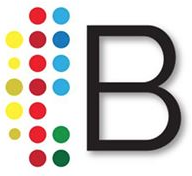The other day, a client came to me with an interesting request: How many independent pizza restaurants operate in the US. After consulting the usual library resources and pizza industry associations, I was still unable to fully answer this question (I had the total number of restaurants, market size etc, but I did not have the number of non-franchise establishments). I turned to Google for answers and in the process found not only the answer to my question, but also an interesting free resource: Franchise Direct (http://www.franchisedirect.com/). What is Franchise Direct?
Franchise direct is a site designed for people who are considering taking the plunge and opening up their own franchise, say a Starbucks, for example. The site, as far as I can tell, makes money by directing interested parties to franchise opportunities. To make the site more attractive to prospective franchise owners, Franchise Direct provides industry information for each franchise vertical it profiles, for example coffee houses or housecleaning services.
How Can Librarians and Researchers Benefit from Franchise Direct?
The reports on Franchise Direct are actually pretty good and typically contain market sizing, demographic, and industry-trend data. Their data and analysis are not de novo. The information for their typical industry report comes from major research firms like NDP and Frost & Sullivan, in addition to data from industry associations etc. Franchise direct also has data on the capital requirements for various franchises, which is an interesting data point in its own right.
Are there any Problems with the Site?
Franchise Direct does have some major drawbacks, though. Consistency is a big problem for this site. Some industries have very light industry profiles while others have no information at all. Thus, mining Franchise Direct for market intelligence is something of a tossup. You can rest assured that popular franchises like coffee houses or pizza restaurants will have good market reports, while less popular verticals, like courier franchises, will have less attention. The site, which has been around for approximately 9 years, does not seem particularly interested in filling in these gaps.
In any case, Franchise Direct is a great resource to keep in your back pocket. It has very useful market information on consumer industries that have a multitude of franchising opportunities, not to mention details and data on starting a franchise. Check it out here: http://www.franchisedirect.com/










